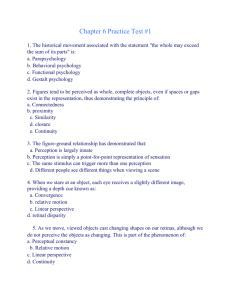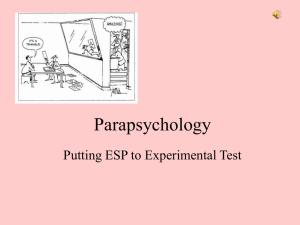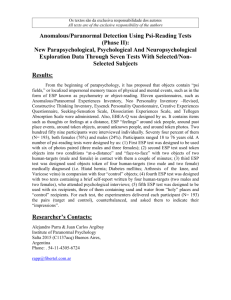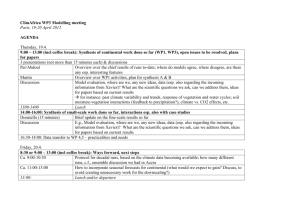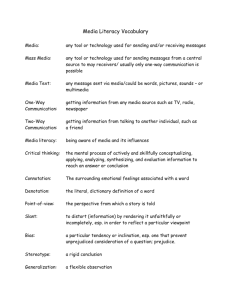056
advertisement
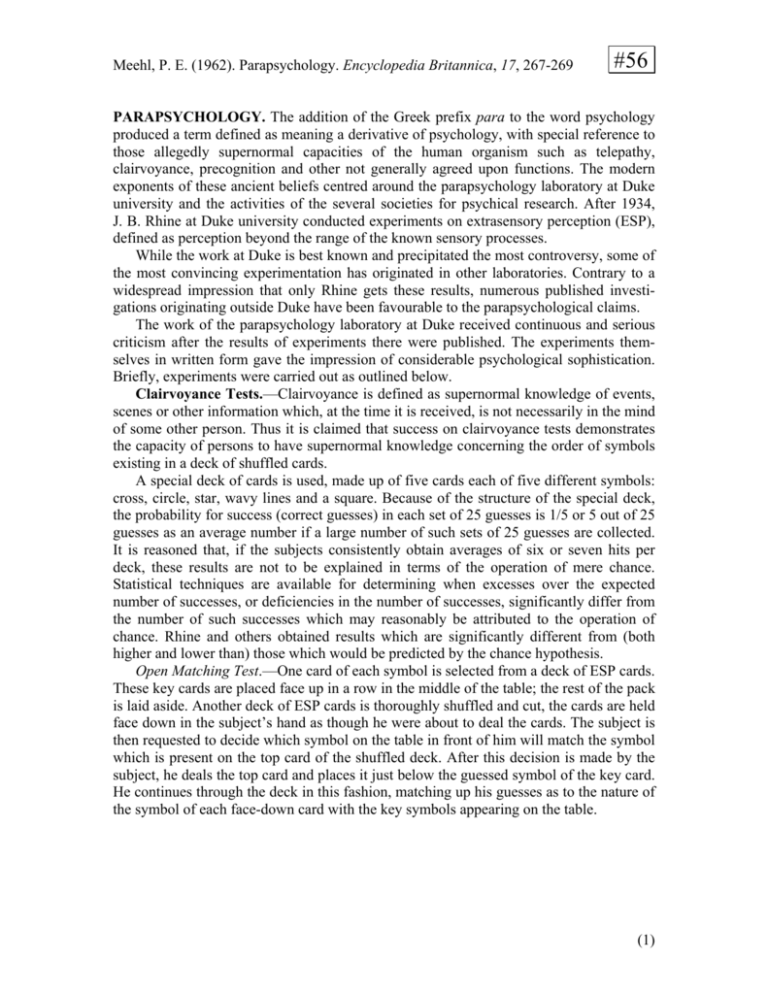
Meehl, P. E. (1962). Parapsychology. Encyclopedia Britannica, 17, 267-269 #56 PARAPSYCHOLOGY. The addition of the Greek prefix para to the word psychology produced a term defined as meaning a derivative of psychology, with special reference to those allegedly supernormal capacities of the human organism such as telepathy, clairvoyance, precognition and other not generally agreed upon functions. The modern exponents of these ancient beliefs centred around the parapsychology laboratory at Duke university and the activities of the several societies for psychical research. After 1934, J. B. Rhine at Duke university conducted experiments on extrasensory perception (ESP), defined as perception beyond the range of the known sensory processes. While the work at Duke is best known and precipitated the most controversy, some of the most convincing experimentation has originated in other laboratories. Contrary to a widespread impression that only Rhine gets these results, numerous published investigations originating outside Duke have been favourable to the parapsychological claims. The work of the parapsychology laboratory at Duke received continuous and serious criticism after the results of experiments there were published. The experiments themselves in written form gave the impression of considerable psychological sophistication. Briefly, experiments were carried out as outlined below. Clairvoyance Tests.—Clairvoyance is defined as supernormal knowledge of events, scenes or other information which, at the time it is received, is not necessarily in the mind of some other person. Thus it is claimed that success on clairvoyance tests demonstrates the capacity of persons to have supernormal knowledge concerning the order of symbols existing in a deck of shuffled cards. A special deck of cards is used, made up of five cards each of five different symbols: cross, circle, star, wavy lines and a square. Because of the structure of the special deck, the probability for success (correct guesses) in each set of 25 guesses is 1/5 or 5 out of 25 guesses as an average number if a large number of such sets of 25 guesses are collected. It is reasoned that, if the subjects consistently obtain averages of six or seven hits per deck, these results are not to be explained in terms of the operation of mere chance. Statistical techniques are available for determining when excesses over the expected number of successes, or deficiencies in the number of successes, significantly differ from the number of such successes which may reasonably be attributed to the operation of chance. Rhine and others obtained results which are significantly different from (both higher and lower than) those which would be predicted by the chance hypothesis. Open Matching Test.—One card of each symbol is selected from a deck of ESP cards. These key cards are placed face up in a row in the middle of the table; the rest of the pack is laid aside. Another deck of ESP cards is thoroughly shuffled and cut, the cards are held face down in the subject’s hand as though he were about to deal the cards. The subject is then requested to decide which symbol on the table in front of him will match the symbol which is present on the top card of the shuffled deck. After this decision is made by the subject, he deals the top card and places it just below the guessed symbol of the key card. He continues through the deck in this fashion, matching up his guesses as to the nature of the symbol of each face-down card with the key symbols appearing on the table. (1) Blind Matching Test.—This test is like the open matching test except that here the key cards are face down and their position is unknown. The five key cards are shuffled out of sight of the subject and placed face down by the experimenter. The rest of the test is carried out in the same manner as the open matching test. It should be noted that in this test the subject should not see the symbols on the key cards placed in front of him. Single Card Calling Test.—This is conducted by guessing the symbol on the top card of a shuffled ESP deck, removing that card still face down, guessing the symbol on the next card and so on through the deck. Pack Calling Test.—In this the subject makes a set of 25 consecutive calls directed at a shuffled but unbroken deck of ESP cards. Usually the deck of cards is placed in front of the subject, but sometimes it is not present in the same room. Successes with this technique were reported consistently from the parapsychology laboratory and in an experiment conducted by D. R. Schmeidler and G. Murphy at Harvard University. Telepathy.—The parapsychology laboratory also studied telepathy by means of several techniques. Pure Telepathy Method.—This is a test for extrasensory perception of thought alone. No cards are used to guide the choices of the agent. He simply chooses a random order of the ESP symbols and holds these in mind (without writing them down) until the receiver or percipient has made his choices. Success in this test allegedly depends entirely upon reading the sender’s thoughts. General Extrasensory Perception Test.—In this test the sender shuffles and cuts a deck of ESP cards and looks at the face of each card while the receiver attempts to read the mind of the sender and guess the symbol on which the sender is concentrating. When one card is finished, the test proceeds to the next card and so on through the deck. Distance Telepathy Test.—In the methods discussed above, the subject and experimenter were usually in the same room. Some results were collected in which the subject and experimenter were separated by several rooms or by a considerable distance. A few experiments were successful in eliminating the hypothesis of chance causation of results when subject and experiments were separated by many miles. Precognition.—Several techniques also were devised for the study of precognition, defined as the hypothesis that future events may be apprehended extrasensorily and extrarationally. In one technique the percipient tries to call through the future order of a whole deck, after which the deck is shuffled mechanically and its resultant order matched with the call sequence. In another procedure the individual target card is presented to the agent (or sender) two or three seconds after the percipient announces his guess. Psychokinesis.—Whereas in telepathy and clairvoyance the subject’s psychological state is influenced by the external world, occurrence of the reverse process, that of influencing physical events by paranormal means, has also been alleged. In these “mindover-matter” experiments, the subject attempts by thinking or willing to determine (without physical contact) the outcome of a mechanically performed dice throw. If the outcome he is set to produce, is itself randomly selected, such an influence (called psychokinesis) can be detected by statistical analysis of a series of such attempts. The experimental evidence for the psychokinetic effect is considerably weaker than that for ESP, and many psychologists who accept the reality of ESP remain unconvinced of psychokinesis. (2) Sources of Error.—As indicated above, this experimental work was subjected to continual critical comment. Criticism may be summarized under the headings of (1) minimal and subliminal sensory cues, (2) mental habits and preferences, (3) recording errors and errors of experimental method, (4) statistical methods, (5) outright fraud by the experimenter himself (i.e., faking the data). The antagonism aroused among scientists by positive parapsychological findings is evidenced by this fifth kind of attack, which is rare in scientific criticism generally unless specific evidence of fraud is available. Sensory Cues.—The human organism is incapable, in many instances, of reporting correctly on the stimuli operating on the organism at the time. Behaviour is determined and modified by small noises, weak visual stimuli, subliminal odours, etc., of which the subject is entirely unaware. This phenomenon has led to considerable false evidence for parapsychological phenomena and, in some of the early work of the parapsychology laboratory, appears to have been responsible for certain of the extrachance scores in telepathy and clairvoyance experiments. For example, some of the ESP cards used in these experiments were so printed that the symbol on the face of the card could be read from the back, if the light reflecting from the back of the card entered the subject’s eye at an angle of approximately 60°. Conditions of experimentation in which subject and experimenter are in the same room should also be avoided, because of the possibility of minimal auditory communication. Mental Habit.—It is a well-known fact that choices made by human beings in situations such as those described in the pure telepathy method above do not correspond to the choices of material made by a randomizing procedure. A simple experiment to demonstrate this phenomenon of mental habit or preference may be carried out by asking a group of persons to make five successive guesses of the results of tossing an imaginary coin. The subjects record a pattern of heads and tails. If these patterns are subjected to statistical analysis, it may be demonstrated that certain patterns—such as heads, heads, tails, heads, tails or tails, tails, heads tails, heads—occur at frequencies well beyond the expected or predicted frequency if actual coins were used. If the target and call series are both products of human thought, extrachance results may arise solely on this basis, no paranormal communication being involved. Therefore the target series in either clairvoyance or telepathy tests must be determined either by machine (shuffling, dicethrowing, electronic randomizing device) or, as became common practice after the 1940s, by the use of a table of random numbers. Recording Error.—The precise way in which the results of guessing have been reported has also been suggested as a possible source of error which would allow the occurrence of extrachance scores by perfectly normal and well-understood means. In many of the parapsychological techniques, the experimenter also serves as the recorder. Expectancy of successes, excitement and divided attention at the time of recording will produce erroneous results which are very difficult to trace in terms of causation, once they have been written down. Experiments utilizing electrical or photographic recording have shown that experimenters personally favourable to the paranormal claims tend to record more hits than actually occur, while those of adverse bias show a tendency to misobserve or misrecord in favour of misses. Electrical, mechanical or photographic means of recording both call and target series are preferable. It is undesirable for the experimenter to act as agent himself, unless another observer records his calls. (3) When human recording is used, the obvious solution is to have agent and percipient, with their respective observers, in different rooms. In any case, separate records of target and call series should be routine in every experiment. The human organism is not an objective recording device, as the history of error in experimental psychology and in psychical research amply testifies. Statistical Methods.—The first critical comment directed at the experiments on extrasensory perception had to do with statistical methods, particularly in the designation of the theoretical probability of success. Reasonable agreement was reached that the statistical methods used in research on extrasensory perception are sufficient to provide information by means of which the hypothesis of chance expectancy may be denied. Fraud.—Even prior to the passionate controversy of the late 1930s, several experimental series yielding clear positive findings had been published which seemed adequately protected against all sources of error except deliberate fraud by the experimenter. Several others appeared later. Beginning in 1943, the British investigator S. G. Soal and his colleagues rearoused scientific interest by publishing the results of a long and carefully controlled experimental series run on two unusually and consistently high-scoring subjects (Basil Shackleton and Gloria Stewart). No significant experimental or statistical criticism of this research appeared. In addition to giving powerful support for the reality of ESP, this research was also distinguished by its careful examination of special aspects of the telepathic process. Among the matters investigated were the effect of several agents sending together or in opposition, influence of lead screens (none), mathematical features of the internal relations within the subject’s guessing sequence, influence of manipulating the guessing rate, persistence of positive findings when agent and percipient were separated by the English channel. The orderliness and consistency of the findings on these two subjects, as well as their remarkably good scoring levels over very long series, impressed those psychologists who are acquainted with the research even more than the extremely high levels of statistical significance attained. Trends.— Other developing trends in parapsychology are: research upon ESP in animals; further collection and detailed qualitative examination of spontaneous cases (i.e., paranormal cognition not appearing in the laboratory but in the course of daily life), aiming at a theoretical formulation of the process; experimentation with target stimuli to permit a partial hit or degree of success rather than a categorical hit or miss (e.g., cards showing clock hands from whose true position the subject’s guess may err in varying degrees). Many are seeking correlates (e.g., personality traits, belief in ESP) or conditions (e.g., timing, drugs, hypnosis, rewards) which will assure success. Theorizing suffers from the restricted range of extra-chance deviations available for manipulation and analysis. Skeptics stress the “erratic” character of the phenomena. Many psychologists withhold credence pending specification of methods of procedure and subject-selection which will consistently yield results. Parapsychology in Contemporary Science.—The situation of parapsychology in contemporary science is anomalous. The great majority of U.S. psychologists do not accept it as a fact, and only a very small minority of them are acquainted with the post1938 research, most of which appears in journals to which very few subscribe or books which are not read. This negative attitude is less characteristic of British and continental psychologists. The net evidence for the reality of ESP is approximately as weighty as that for numerous other concepts widely held by psychologists. The chief obstacle to a more (4) widespread scientific acceptance of the findings, as some of the fairest and most competent skeptics have pointed out, is the almost complete lack of any plausible theoretical account as to the underlying causal processes. This difficulty is more than merely the absence of a good theory, since the majority of observed empirical relationships in other branches of psychology also have not been given rigorous theoretical derivation but are nevertheless assimilated simply as brute facts. What disturbs the psychologist about ESP is the great difficulty he has in imagining even the general kind of scientific explanation that could be forthcoming for such a phenomenon as, say, precognitive telepathy. Philosophical critics have pointed out the conceptual difficulties involved in the notion that a future event, not yet “in existence,” causally influences the present. Ordinary telepathy and clairvoyance pose similar conceptual problems. The alleged facts of parapsychology do not actually challenge any established laws of general psychology; what they seem to challenge is the modern psychologist’s basic views concerning the reduction of the cognitive functions of organisms to the physiology of their material components as these are influenced by substances or energies (of the kinds presently known to physics) impinging upon the body surface. In a sense, the threat presented to psychologists by these data is not so much scientific as metaphysical; i.e., the facts appear to generate major difficulties for physiological reductionism as a complete view of the human organism. In 1938, L. Warner and C. C. Clark conducted a survey on ESP, by mailing questionnaires to a sample of members of the American Psychological association. The same questionnaire survey was repeated three times in the 1950s to show what change had occurred in the climate of opinion over the intervening years. The percentage of fullmember psychologists considering ESP as either an established fact or as a likely possibility had risen slightly, from 8.8% in 1938 to 16.6% in 1952. Corresponding figures for two samples of younger psychologists (recently granted the Ph.D.) were 29.7% (1950) and 31.8% (1955), suggesting that those who will constitute the coming generation are more favourably inclined to accept the reality of parapsychological phenomena than were their predecessors. See also PSYCHICAL RESEARCH; SPIRITUALISM. BIBLIOGRAPHY.—Carl Murchison (ed.), The Case For and Against Psychical Belief (1927); J. B. Rhine et al., Extra-Sensory Perception After Sixty Years (1940); J. B. Rhine and J. G. Pratt, Parapsychology (1958); S. G. Soal and F. Bateman, Modern Experiments in Telepathy (1954); G. R. Price “Science and the Supernatural,” Science, vol. cxxii, pp. 359-367 (Aug. 26, 1955); “The Controversy in Science over ESP,” J. Parapsychol., vol. xix, pp. 236-271 (1955); George Zorab, Bibliography of Parapsychology (1957). See also the periodicals: Journal of Parapsychology; Proceedings of the Society for Psychical Research; Journal of the Society for Psychical Research; Journal of the American Society for Psychical Research. (P. E. M.) pdf by ljy March 2003 (5)
